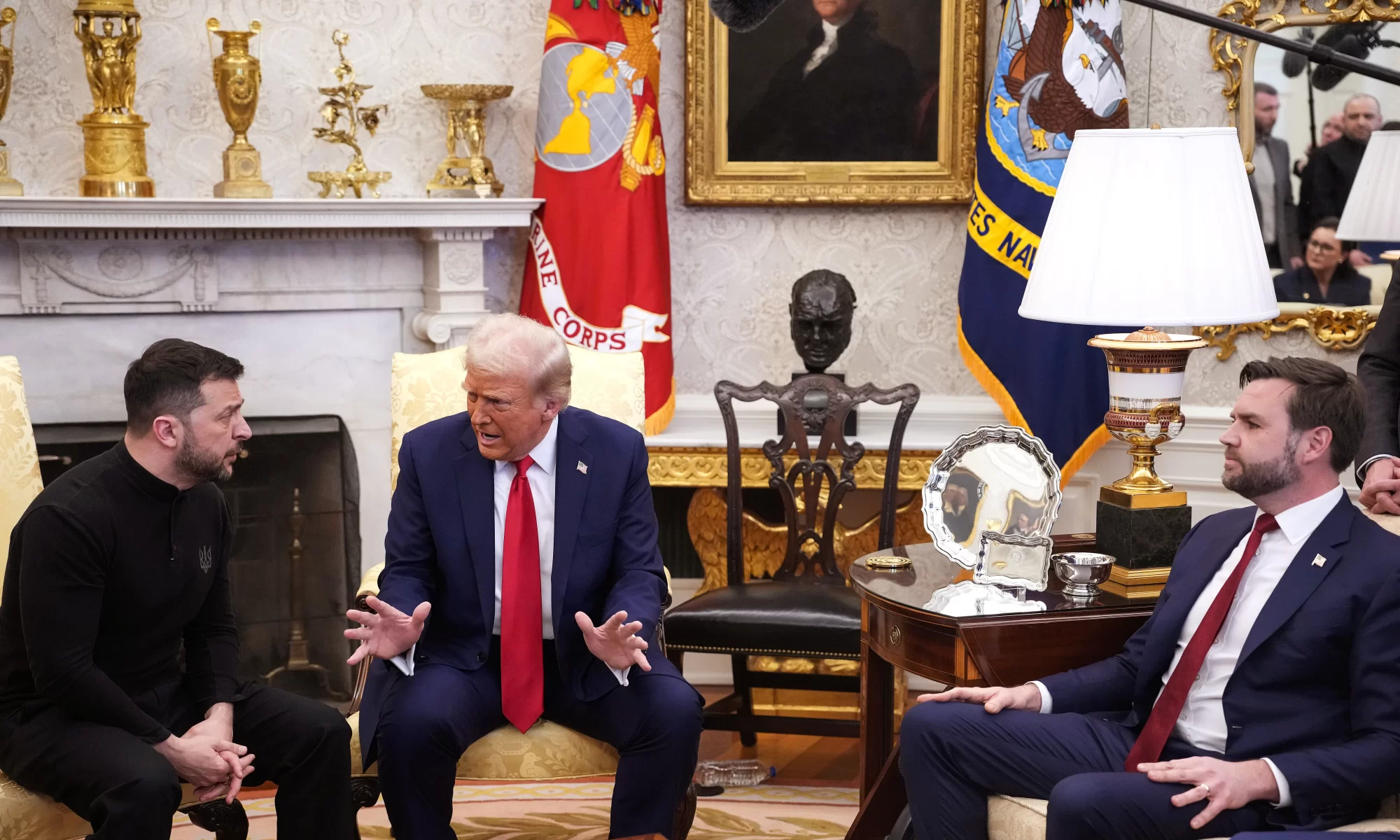1: How important are semiconductors between the India-Taiwan bilateral ties?
-
- Taiwan dominates semiconductor manufacturing, and India aspires to initially become self-reliant and a semiconductor hub in the long run.
- Semiconductor cooperation can be a key element in India-Taiwan’s bilateral relations.
- Taiwan is home to TSMC (Taiwan Semiconductor Manufacturing Company), the world’s leading contract chip manufacturer, and other key semiconductor firms like UMC and MediaTek.
- Taiwan accounts for over 60% of global semiconductor production, making it indispensable in the global semiconductor supply chain.
- India strives to become a major semiconductor manufacturing and design player with government initiatives like the Semiconductor Mission and incentives under the PLI (Production-Linked Incentive) scheme.
- However, India lacks advanced fabrication facilities and relies on imports for its semiconductor needs.
- Taiwanese firms, including TSMC and UMC, have been in discussions about establishing semiconductor plants in India.
- India and Taiwan have explored partnerships to set up semiconductor packaging and testing facilities.
- The most prominent initiative in the past was Foxconn’s joint venture with Vedanta to set up a semiconductor fab in India. However, this project faced setbacks, and Foxconn later withdrew.
- Taiwan’s MediaTek has R&D operations in India, and more companies are eyeing design and software collaborations.
- Taiwan faces increasing pressure from China, while India has border tensions with Beijing. Strengthening semiconductor ties helps both nations reduce reliance on China.
- Amid U.S.-China tech tensions, India is a potential alternative for Taiwan to de-risk its semiconductor supply chains. However, due to pressure from China, Taiwan’s firms may hesitate to invest heavily in India.
- Semiconductor cooperation offers mutual benefits in economic growth, technological advancement, and strategic realignment.
2a: How’s the development of an AI-technology innovation ecosystem linked to semiconductors?
-
- This relationship between AI and Semiconductors is symbiotic.
- Developing an AI-technology innovation ecosystem depends on robust, specialised chips for computation. On the other hand, advances in AI drive semiconductor innovation.
- AI is revolutionising the semiconductor industry.
- AI workloads like machine learning (ML), deep learning, and generative AI require enormous computational capacity, which is powered by advanced semiconductor technologies like Graphics Processing Units (GPUs).
- Application-Specific Integrated Circuits (ASICs) and custom chips (e.g., Google’s TPUs) are optimised for AI workloads, enhancing performance and efficiency.
- Future AI applications would demand breakthroughs in semiconductor design (Neuromorphic & Quantum Chips), mimicking brain-like processing or leveraging quantum computing.
- AI-enabled devices (smartphones, IoT, autonomous systems) require power-efficient chips for real-time AI inference.
- A thriving AI ecosystem requires cutting-edge semiconductor technology, while AI drives semiconductor innovations.
- Countries investing in AI are also focusing on semiconductor self-sufficiency.
- To stay competitive, nations aiming to lead in AI must also invest in advanced semiconductor capabilities.
2b How’s Taiwan important for Indian AI?
-
- Taiwan is Important for Indian AI development, and it can play a critical role in India’s AI ambitions due to its dominance in semiconductor manufacturing, expertise in AI hardware, and potential for technological collaboration.
- Taiwan is home to TSMC, MediaTek, and other key players; India’s AI growth is closely linked to its semiconductor partnerships with Taiwan.
- Taiwan’s MediaTek supplies AI-driven smartphone processors, the key to India’s mobile AI market.
- Taiwan’s semiconductor firms could help India build chip fabrication and packaging infrastructure, supporting India’s AI industry.
- Taiwan’s expertise in embedded AI, 5G chips, and smart sensors can enhance India’s AI-driven IoT industry.
- Taiwan has top research institutions (e.g., Academia Sinica, ITRI) specialising in AI-chip co-development, with which India can collaborate.
- India’s AI Software Strength – India excels in AI/ML software development, while Taiwan specialises in hardware. This complementary relationship can lead to co-innovation in AI applications.
- Taiwan and India can expand cooperation in AI-powered automation, fintech, and healthcare solutions.
- India relies on Taiwan for high-end GPUs and AI chips, which are essential for AI supercomputing and cloud AI services.
- Taiwan is vital for India’s AI ecosystem due to its semiconductor leadership, AI hardware expertise, and potential investment in India’s chip industry.
2c Is ‘AI bias’ one sphere in which India and Taiwan should collaborate? I think AI bias will be used in narrative warfare by China. So, it sounds logical that India will look towards Taiwan for it. That’s why this question.
-
- Yes, AI bias is a critical area where India and Taiwan should collaborate, especially considering how China could leverage AI for narrative warfare, disinformation, and ideological control.
- Given Taiwan’s experience in countering Chinese propaganda and cognitive warfare and India’s strength in AI software development, a partnership between the two could be mutually beneficial.
- AI models learn from data, and if this data is manipulated, it can shape narratives in ways that serve geopolitical agendas. China has a history of AI-enabled information control.
- Chinese AI firms develop models that filter, distort, or suppress certain narratives (e.g., Tiananmen Square and Uyghur issues).
- AI-driven bot networks and deepfakes help China push state-controlled narratives globally.
- AI-powered language models can spread biased historical or political perspectives on global platforms.
- Given these threats, India and Taiwan must proactively develop AI systems that resist bias and manipulation to safeguard their information sovereignty.
- India (with its AI research institutions like IITs, IIITs, and NITI Aayog) and Taiwan (via Academia Sinica, ITRI) can create joint frameworks for identifying and countering AI bias.
- Instead of relying on U.S. or China-dominated AI models (GPT, ERNIE), India and Taiwan can work on regional AI models trained on neutral or diverse datasets.
- Taiwan is already a leader in countering Chinese misinformation; India can integrate these capabilities into its AI-driven news verification systems.
- India and Taiwan should limit dependency on Chinese AI tools, chips, and cloud services to avoid hidden biases and surveillance risks.
- China can manipulate AI models. India and Taiwan must ensure independent, bias-resistant AI tools.
- Both countries face Chinese psy-ops through TikTok clones, AI-driven chatbots, and misinformation on global platforms. Collaboration on AI-driven digital hygiene strategies is essential.
- AI bias is not just a technical issue but a geopolitical weapon. Given China’s advancements in AI-enabled narrative control, India and Taiwan must collaborate to develop AI models that are transparent, unbiased, and resilient to manipulation.
3: Do you think Taiwan will determine the QUAD’s Indo-Pacific policy? Do you think Taiwan will be included in QUAD Plus?
-
- Taiwan is strategically important for the Indo-Pacific.
- Its inclusion in QUAD+ or any official QUAD policy is highly sensitive due to geopolitical constraints, primarily the One-China policy followed by QUAD members.
- However, Taiwan is already a de facto part of the Indo-Pacific security architecture, and its role may increase informally without direct QUAD membership.
- Taiwan plays a key role in significant aspects of the Indo-Pacific strategy.
- India, Japan, and Australia have quietly increased economic, diplomatic, and military engagement with Taiwan.
- The U.S. openly supports Taiwan’s defence and maintains strong military ties with Taiwan (e.g., arms sales, intelligence-sharing).
- Joint statements focus on ‘peace and stability in the Taiwan Strait’, a veiled warning to China.
- This suggests Taiwan is a silent but critical factor in QUAD’s Indo-Pacific strategy.
- The idea of QUAD+ (expanded QUAD partnerships) includes countries like South Korea, Vietnam, the Philippines, and European allies. Taiwan’s inclusion is politically tricky but possible in indirect ways.
- QUAD could integrate Taiwan into its semiconductor, AI, and cyber initiatives without direct military ties.
- Taiwan is already working with the U.S. and Japan on cyber defence against China.
- QUAD’s Indo-Pacific Economic Framework (IPEF) could involve Taiwan in trade and investment deals.
- Taiwan’s inclusion could provoke Chinese military aggression, making regional stability harder to maintain.
- India’s stance on Taiwan is cautious but evolving, with no diplomatic recognition (it follows the One-China policy but doesn’t reaffirm it actively), expanding economic & tech ties, and a measured stance on security issues (India doesn’t directly engage on Taiwan’s defence but is watching U.S.-China tensions closely).
- Taiwan will likely play a more significant role in QUAD’s Indo-Pacific policy, but formal membership in QUAD+ is unlikely in the near future due to China’s geopolitical sensitivities.
4. Do you think, that Taiwanese TSMC’s $100 billion investment in the US has any lessons for India-Taiwan bilateral ties?
Taiwan Semiconductor Manufacturing Company’s (TSMC) $100 billion investment in the U.S. offers several lessons for India-Taiwan bilateral ties, particularly in the semiconductor sector.
TSMC’s investment in the U.S. is not merely a business move but a strategic decision driven by geopolitical concerns, primarily supply chain resilience and U.S.-China tensions. Similarly, India must recognise the strategic value of deepening semiconductor cooperation with Taiwan, not just as an economic initiative but as a crucial aspect of national security and self-reliance (Atmanirbhar Bharat).
Taiwan seeks to diversify its semiconductor production due to concerns about a potential Chinese invasion. The U.S. has emerged as one alternative, and India could position itself as another. New Delhi can present itself as a stable and growing economy with skilled labour and a commitment to semiconductor self-sufficiency.
The U.S. successfully attracted TSMC by offering massive incentives under the CHIPS Act, including subsidies, tax breaks, and infrastructure support. Under its Semiconductor Mission, India is offering similar incentives, but the challenge is ensuring a competitive ecosystem, covering land acquisition, power supply, and water availability (all crucial for fabs). If India wants Taiwanese firms like TSMC or UMC to invest, it must streamline regulatory processes and enhance the ease of doing business.
Please Do Comment.
For regular updates, please register your email here:-
References and credits
To all the online sites and channels.
Pics Courtesy: Internet
Disclaimer:
Information and data included in the blog are for educational & non-commercial purposes only and have been carefully adapted, excerpted, or edited from reliable and accurate sources. All copyrighted material belongs to respective owners and is provided only for wider dissemination.



